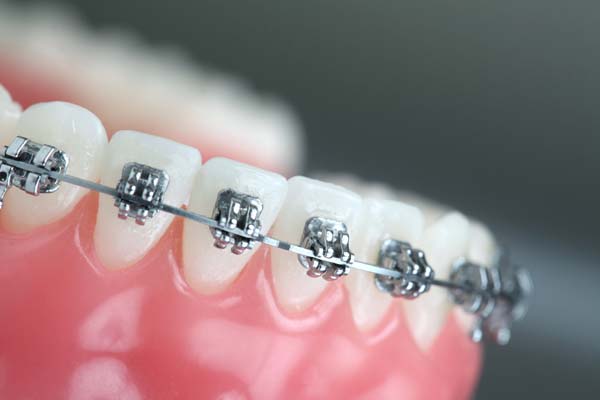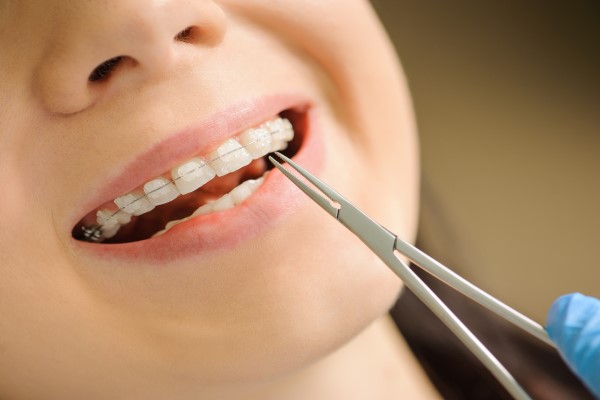Learn About Phase Two Early Orthodontic Treatment

A lot of parents are familiar with traditional orthodontic treatments for older children, adolescents and adults, such as braces or aligners. Parents may not know that younger children may need early orthodontic treatment. When children have serious oral problems early on in life, the solution is often early orthodontic treatment that starts around age seven or eight.
The first phase of early orthodontic treatment includes addressing bite issues, correcting jaw malfunction and paving the way for permanent teeth to grow in. The most common way orthodontists administer phase one is through fixed braces. In some scenarios, a retainer, extraction or headgear may be needed. Once the first phase is complete, the child will start phase two. Below is an overview of phase two in early orthodontic treatment. This information can be especially helpful for parents who are currently navigating the orthodontic process with their children. Ready to find out more?
Phase two of early orthodontic treatment
Phase two defined
Phase two of early orthodontic treatment is essentially traditional orthodontic treatment, but it aims to complete the work that was started in phase one. Phase two does not usually start until all or most of the permanent teeth have fully erupted and grown in. Traditionally, phase two of early orthodontic treatment includes a type of braces, clear aligners or fixed retainers. Outlined below are a few of the treatment outcomes that phase two of early orthodontic treatment achieves.
- It moves permanent teeth into their proper position.
- It corrects any remaining bite issues.
- It finishes improving the function of the teeth and jaw.
- It straightens any remaining crookedness or crowding.
- It closes minor gaps that were not addressed in phase one.
Aside from the above goals that phase two of early orthodontic treatment aims to achieve, there are several additional associated benefits. Some of these main benefits include improved facial appearance and higher self-esteem for children who may have previously struggled with confidence issues.
Other important things to note
It is important to note that both phases of early orthodontic treatment are necessary. Parents are often very hesitant to put their children through early treatment, but it can be very beneficial in the long run for the aesthetic appearance, function and health of the child's oral cavity. While it can be intimidating, parents can rest assured that orthodontists do everything they can to ensure treatment is carried out efficiently and safely.
Children who go without early orthodontic treatment may suffer from protruding or crowded teeth, which can result in cavities and gum disease. Additionally, the jaw may develop incorrectly, which can lead to poor speech, difficulty chewing and an unpleasant smile. In some cases, traditional orthodontic treatment may need to occur over a longer period of time if early care is not provided.
Find out more from an orthodontist
When looking for further information on early orthodontic treatment and what phase two entails, it can be helpful to chat with an orthodontist directly. Any questions or concerns can be appropriately addressed, and an evaluation can be done to identify what phase of early orthodontic treatment is necessary. Reach out today to learn more or to get started with an appointment.
Request an appointment here: http://www.tennisonortho.com or call Tennison Orthodontics at (817) 522-7358 for an appointment in our Cleburne office.
Check out what others are saying about our services on Yelp: Read our Yelp reviews.
Related Posts
Curious about orthodontic treatment? Read on to learn more. Straight teeth and properly aligned jaws make for a healthy and functional smile. Many people are lucky to have naturally straight teeth, but others require orthodontic intervention to correct overcrowding, gaps, or misalignment. In some cases, orthodontic therapy can extend far beyond repositioning the teeth in…
Looking for a braces specialist? Read on to learn more. You might be hesitant to see a braces specialist if you already see a general dentist regularly. In some cases, patients have an individual situation that requires consulting a specialist. Generally, these professionals have more experience in orthodontics and a consultation with them might make…
Orthodontics help straighten improperly aligned teeth. Teeth alignment problems can ruin the appearance of your smile and leave your teeth more vulnerable to issues like tooth decay and gum disease.Orthodontics uses devices like braces and clear aligners to improve the alignment of teeth by gradually pushing them to better positions over time. Common teeth alignment…
Orthodontics can be used to treat a variety of teeth alignment issues, like a crossbite or crooked teeth. The alignment of a person’s teeth plays an important role when it comes to their oral and overall health. A person has a bad bite when some or all of their teeth do not come together as…


